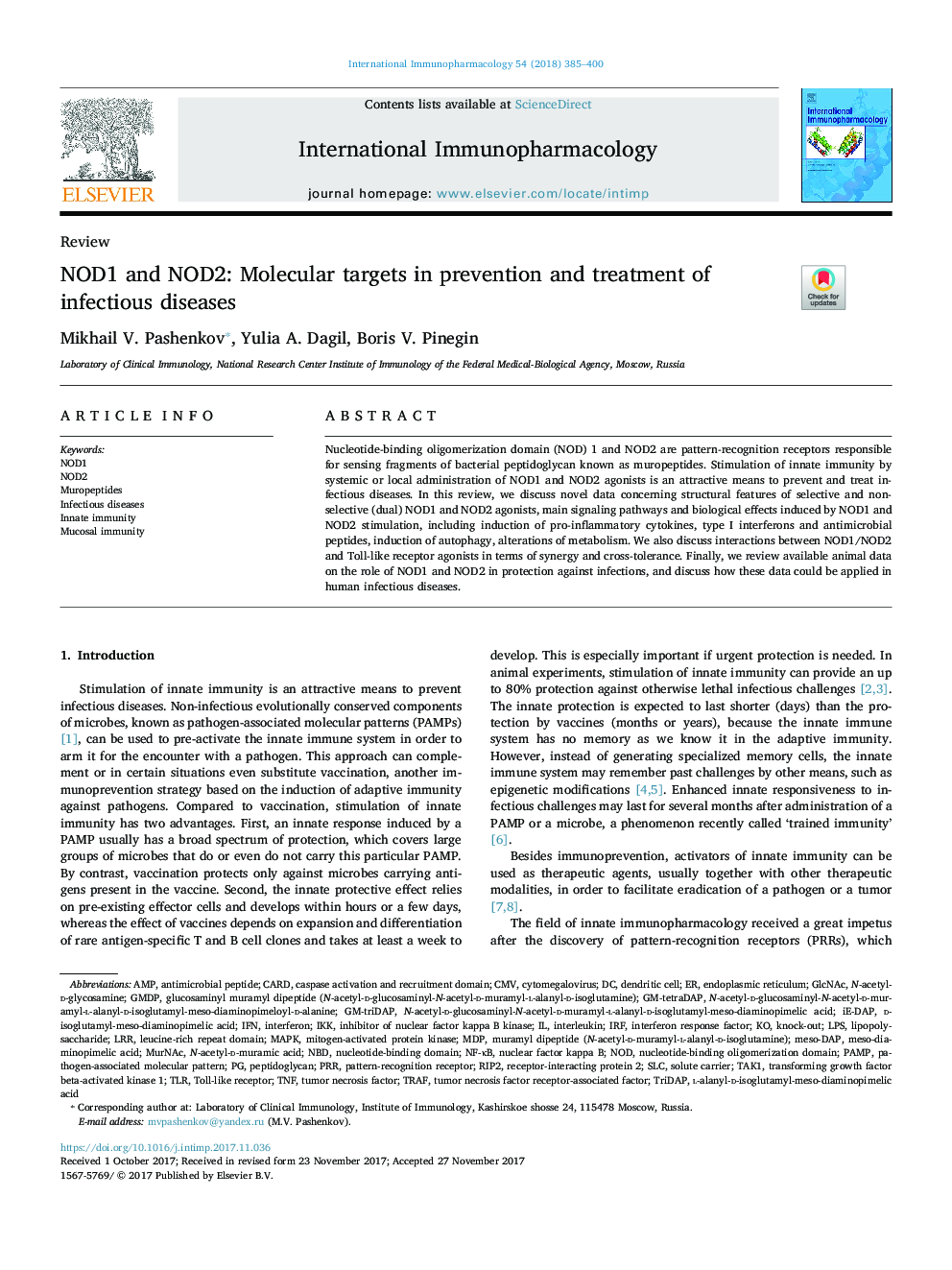| Article ID | Journal | Published Year | Pages | File Type |
|---|---|---|---|---|
| 8531617 | International Immunopharmacology | 2018 | 16 Pages |
Abstract
Nucleotide-binding oligomerization domain (NOD) 1 and NOD2 are pattern-recognition receptors responsible for sensing fragments of bacterial peptidoglycan known as muropeptides. Stimulation of innate immunity by systemic or local administration of NOD1 and NOD2 agonists is an attractive means to prevent and treat infectious diseases. In this review, we discuss novel data concerning structural features of selective and non-selective (dual) NOD1 and NOD2 agonists, main signaling pathways and biological effects induced by NOD1 and NOD2 stimulation, including induction of pro-inflammatory cytokines, type I interferons and antimicrobial peptides, induction of autophagy, alterations of metabolism. We also discuss interactions between NOD1/NOD2 and Toll-like receptor agonists in terms of synergy and cross-tolerance. Finally, we review available animal data on the role of NOD1 and NOD2 in protection against infections, and discuss how these data could be applied in human infectious diseases.
Keywords
TRAFIKKPRRNOD1NF-κBIRFNOD2TAK1RIP2MDPiE-DAPLRRNBDtransforming growth factor beta-activated kinase 1meso-DapMeso-diaminopimelic acidMuropeptidesMurNAcTNFGMDPTLRPAMPNODLPSSLCAMPGlcNAcMAPKpathogen-associated molecular patternInnate immunityMucosal immunityinterferonIFNinterleukinInfectious diseasesToll-like receptorsolute carriernucleotide-binding oligomerization domainnucleotide-binding domainleucine-rich repeat domainDendritic cellcytomegalovirusCMVendoplasmic reticulumtumor necrosis factor receptor-associated factortumor necrosis factornuclear factor kappa Binterferon response factorcaspase activation and recruitment domainlipopolysaccharideknock-outmitogen-activated protein kinaseAntimicrobial peptidePeptidoglycanCARDPattern-recognition receptorreceptor-interacting protein 2
Related Topics
Life Sciences
Immunology and Microbiology
Immunology
Authors
Mikhail V. Pashenkov, Yulia A. Dagil, Boris V. Pinegin,
